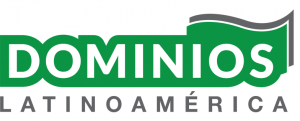Since becoming available, the new gTLD, .MOVIE has gained hundreds of new domain name registrations and has high profile registrations in each film genre, including:
Major Blockbusters: thehungergames.movie; thedivergentseries.movie
Critically Acclaimed: freeheld.movie; secretintheireyes.movie
Romance: thechoice.movie
Animated: normofthenorth.movie
Horror: theboyfanpremiere.movie
Comedy: dirtygrandpa.movie
Drama: nowyouseeme.movie; asyouare.movie
However, not all film productions are getting the maximum benefit from new gTLDs. The eight films nominated for “Best Picture” at this year’s Oscars don’t use .MOVIE; instead, the domains for the eight best picture nominees use one of two common structures, both of which can be adapted to the new gTLD space.
From Movie.com to .MOVIE
The first common structure is the use of the movie title with the word “movie” or “film” to better designate the site. Examples include theroommovie.com, madmaxmovie.com, thebigshortmovie.com, and spotlightthefilm.com. Movies often use this structure due to limits on the .COMs available for registration or conflicting websites of similar titles (e.g., madmax.com resolves to a motorcycle enterprise site).
To avoid potential confusion online and give fans a simple way to access the correct site, movie studios might consider using .MOVIE as a more effective domain name tool. Using the word “movie” may also help better market the site with shorter, more memorable names that are easily integrated into social media handles and initiatives. By opting for a .MOVIE name, films situate themselves in a legitimate space online that provides authenticity to the film business as a whole.
From Brand.com to .BRAND
Another trend among the nominees is to eschew the practice of registering a dedicated domain name and instead just house the movie’s page under the studio’s existing URL structure. The remaining nominees follow this structure: foxmovies.com/movies/the-martian, foxmovies.com/movies/the-revenant, dreamworksstudios.com/films/bridge-of-spies, and foxsearchlight.com/brooklyn. Burying content under multiple pages within a larger site forces users to turn to search engines or other indirect tools of navigation, and does not maximize the visibility of the site online.
Instead, companies that want to underscore the connection between the film and the studio parent company – or simply rely on their own gTLD rather than an open string – may begin utilizing their .BRAND TLDs to directly associate their films to the overall distributor. A recent example came from Sony with the release of the new James Bond movie Spectre. To tie in the Sony Corporation to the film, Sony released assistmoneypenny.sony with games and interactive user content as a marketing tool to promote the film. .FOX also recently entered their testing phase with content on Nic.FOX. This structure allows the brand to stay tightly connected to the film in a way that is more easily accessible and noted by consumers (imagine TheMartian.FOX).
In all, .MOVIE provides a unique opportunity for the future of film online. The motion picture industry can form an online community where film-goers and critics alike can interact with movies. With competition from streaming services like Netflix (whose gTLD, .NETFLIX, is scheduled to go live in the summer of 2016) creating a need for innovation within the industry, gathering together under .MOVIE may be a step in confronting these challenges and garnering traffic online.
Source: Fairwinds Partners
HYPERLINK “http://blog.fairwindspartners.com/domain-name-trends-and-the-future-of-film-online/” http://blog.fairwindspartners.com/domain-name-trends-and-the-future-of-film-online/



Leave A Reply